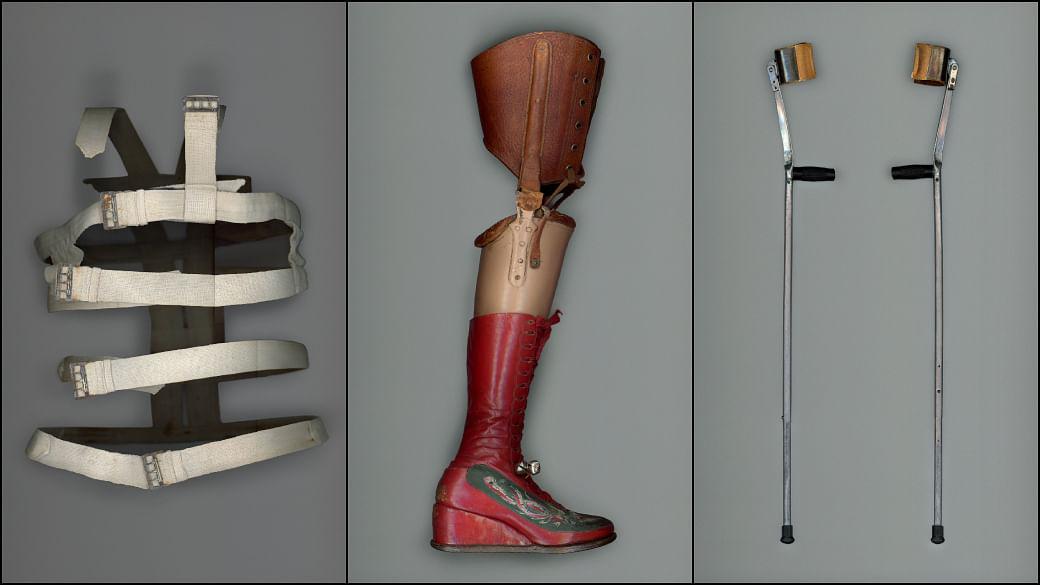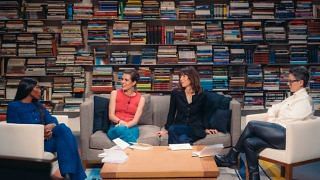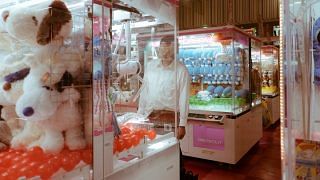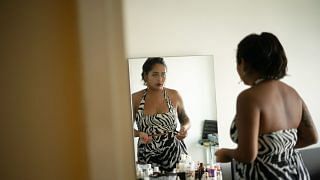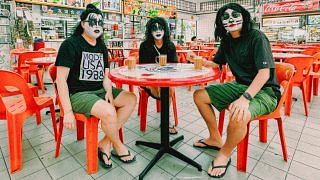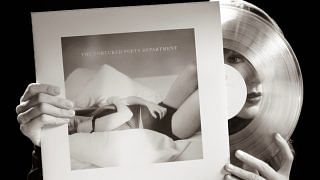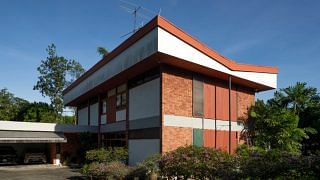The ArtScience Museum here has declared 2024 its “Year of Extraordinary Women”, a theme that guides much of its programme line-up that started with Goddess – an exhibition celebrating female screen legends, which opened in April – and continues on a more arty, but no less enthralling bent this month. Running from May 4 to Sept 1, Frida Forever comprises two separate showcases spotlighting the most powerful female Mexican artist to date.

Cristina Kahlo Alcala (above), the great-grandniece of Frida Kahlo, loaned nearly 40 exhibits for the Laid Bare: Frida’s Inner World exhibition.
There’s the Asian debut of the primed-for-the-’gram Frida Kahlo: The Life of an Icon, which features interactive projections that illuminate pivotal moments in Kahlo’s life. Then there’s also Laid Bare: Frida’s Inner World, which offers a different sort of visual stimulus with its display of artefacts representing the complex medical history that would influence many of her famous self-portraits.
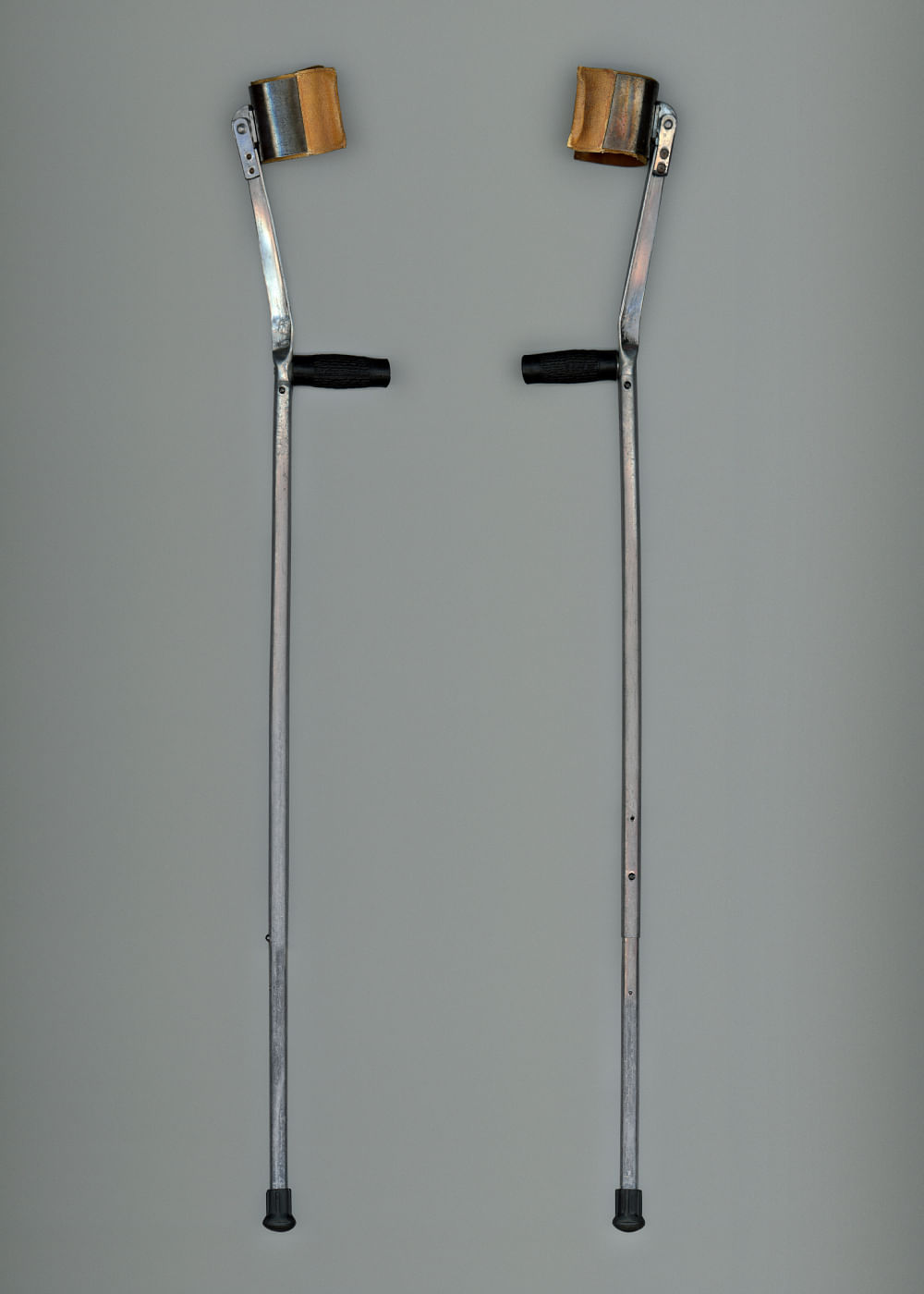
In 2022, British-born artist Katerina Jebb was commissioned by the Palais Galliera in Paris to create life-size photographs of 40 objects used by Kahlo in her daily life through her signature technique of scanning – not unlike with a photocopying machine – to give the images a lifelike quality. Some of these photos are among the exhibits at Laid Bare: Frida’s Inner World, which runs at the ArtScience Museum from May 4 to Sept 1.
Perhaps much more than her deep interest in Mexican folk art or her relationship with her husband, fellow Mexican painter Diego Rivera, Kahlo’s work drew from the chronic pain and medical complications that besieged her following a bus accident in 1925, when she was 18. The near-fatal experience left her with serious spinal fractures and a puncture wound in her abdomen, a broken pelvis, a dislocated elbow and 11 fractures in her right foot. In all, she’s said to have undergone over 30 surgeries in her whole life, the last of which was to amputate her right leg in 1953 – less than a year before her passing. “I don’t paint dreams or nightmares. I paint my own reality,” goes one of her famous quotes.
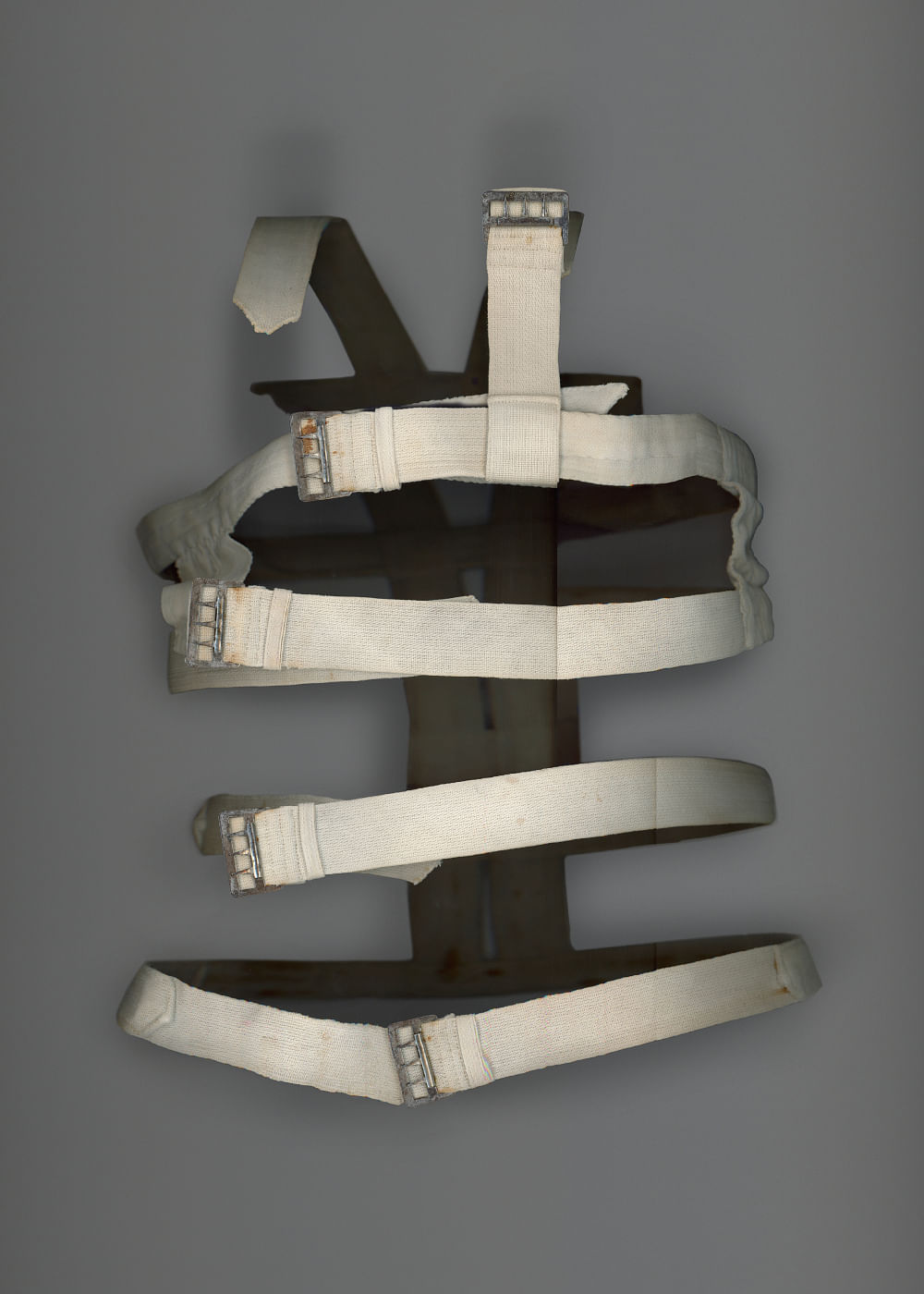
Due to her health condition, Kahlo required various medical devices to go about her everyday life. For example, she needed corsets (above) to support her weak spine.Yet, far from allowing the garment to define her, she often decorated hers so it appeared as an explicit choice.
Tapping on the personal collection of Frida’s great-grand niece Cristina Kahlo Alcala, Laid Bare: Frida’s Inner World marks the first time the artist’s medical records are being shown outside the US. Incorporating contemporary art pieces and modern-day analysis of her health condition, the exhibition ultimately aims to reveal a more intimate and human side to the late Kahlo, and how she used art to process her physical suffering, reclaiming it as a form of beauty and self-empowerment. Here, Kahlo Alcala tells us more.
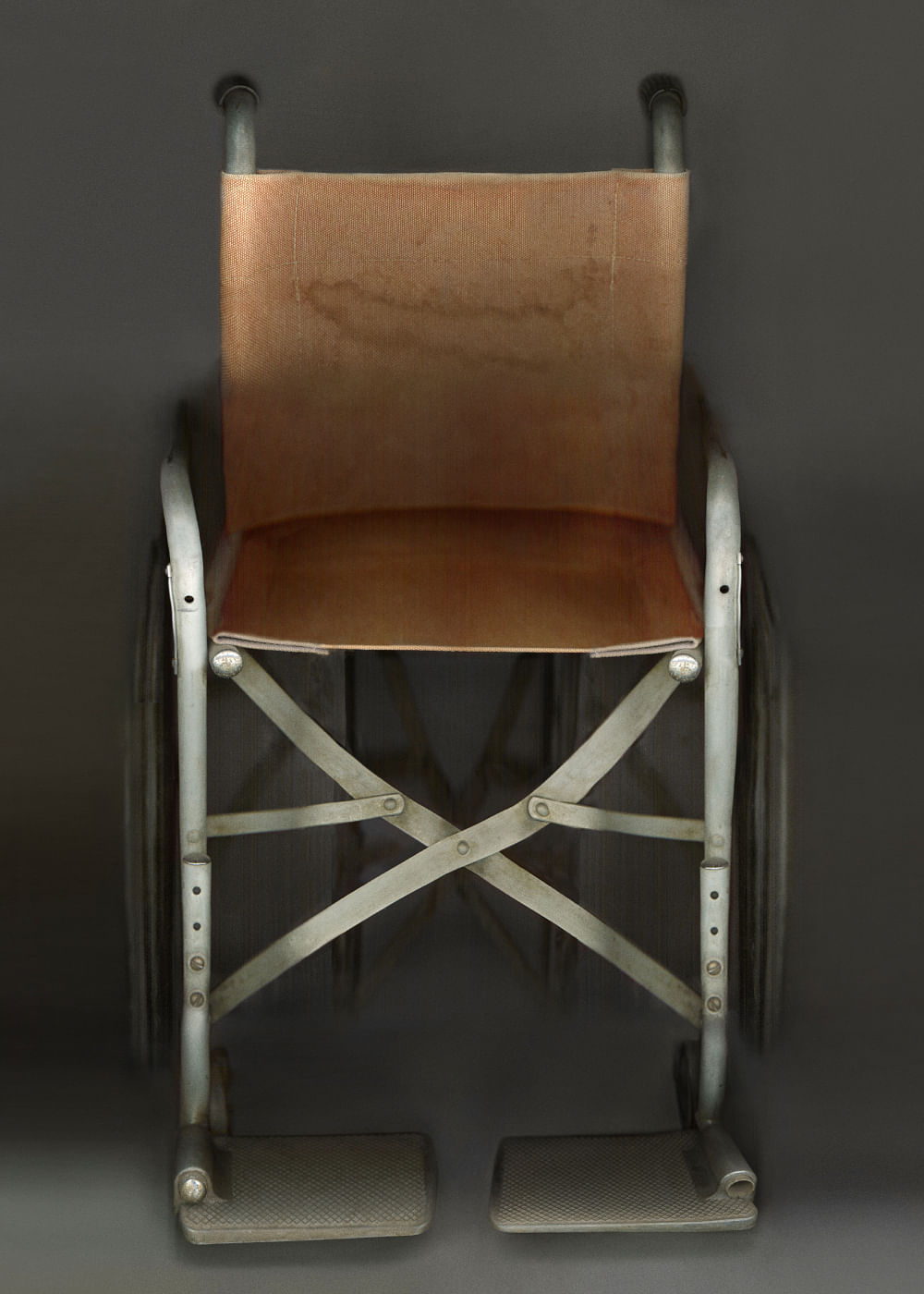
Being too weak to walk also meant Kahlo often had to sit in a wheelchair (above).
Laid Bare can be said to spotlight disability, presenting it instead as something beautiful. Was that in any way your intention?
“The exhibition highlights Frida Kahlo’s long periods of confinement at the American British Cowdray Hospital, among others, where she had stayed due to her multiple surgeries. During her stay, she remained creative and even did some of her work in the hospital. For example, the work Viva la Vida y el Dr. Juan Farill was painted and dedicated to her doctor in 1953 during one of her hospital stays. It is very interesting how Kahlo used her own body as the main subject of her art. Orthopaedic devices, wounds, as well as parts of her external and internal anatomy, served as inspiration for her self-portraits, showcasing how she transformed pain into beauty.”
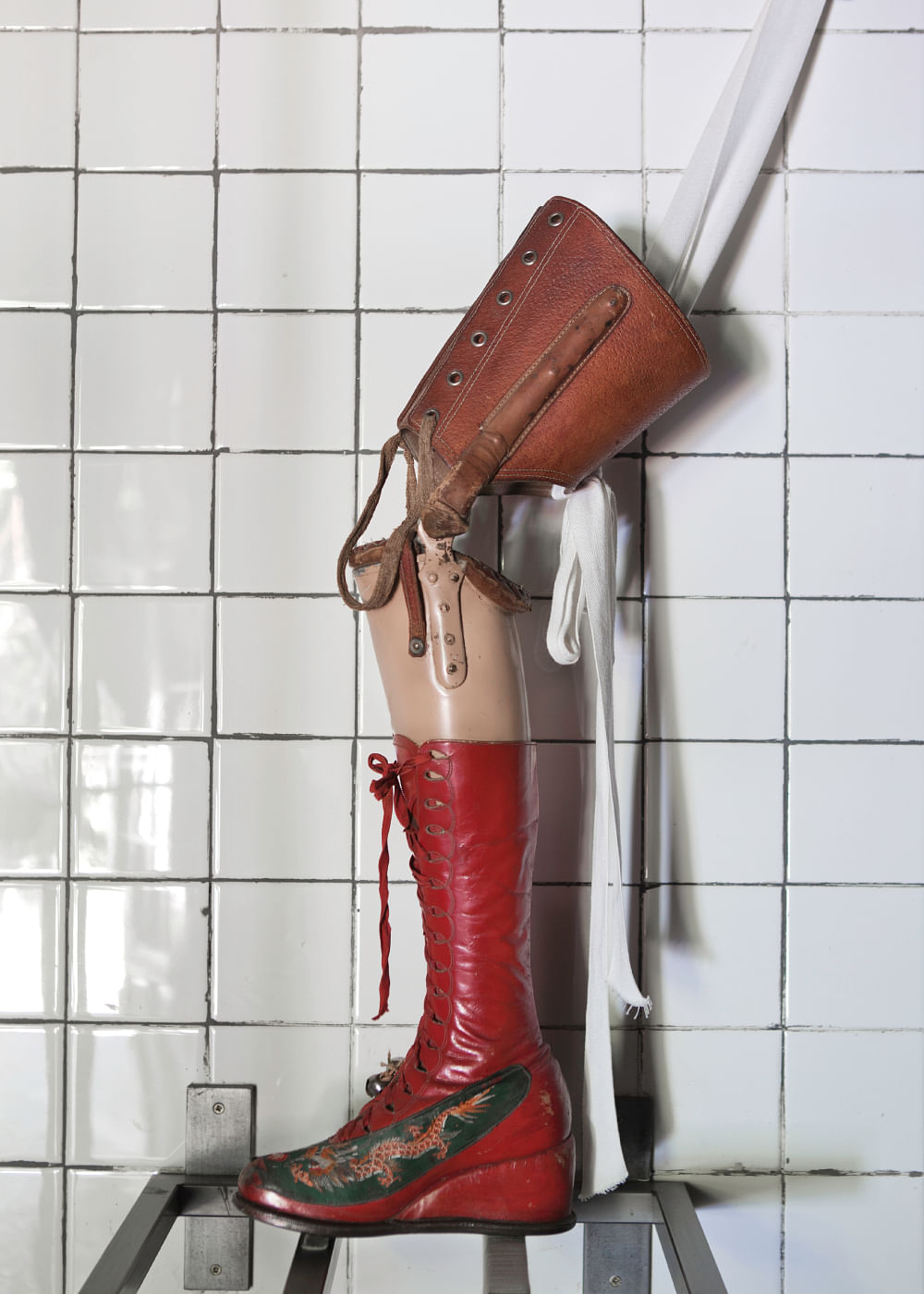
Following the amputation of her lower right limb in August 1953 due to gangrene, she wore a prosthetic leg with a calf-high red boot (above) strapped to it, featuring an ornate dragon motif that she painted on herself.
What do you want viewers to take away from this exhibition?
“For me, it is important that the viewer understands that Frida Kahlo is not a fictional character. Presenting some of her medical records is a way of showcasing that Kahlo was a person of flesh and blood. They emphasise that her hospitalisations were real and that the doctors who treated her are not only part of the many biographies written about Kahlo, but doctors who had their own value. For historians, these documents also hold great value since they contain a lot of information.”

Frida Kahlo’s doctors became some of her closest confidants and sources of emotional support. Here in this 1951 picture shot by German-French photographer Gisele Freund, the late artist is accompanied by Dr Juan Farill, the surgeon who performed all the spinal surgeries late in her life that left her wheelchair-bound as well as her 1953 amputation. He was also the doctor who cared for her up till her death in 1954. The painting in the background, titled Self Portrait With The Portrait Of Doctor Farill (1951), was Kahlo’s last signed self-portrait and a gift to him.
Frida Kahlo was famous for her use of makeup throughout her life, using it to unabashedly highlight aspects of herself that were not socially viewed as beautiful at that time. What do you think makeup was to Frida?
“Frida Kahlo built her personality, first of all, by using clothing and jewellery commonly worn in Mexican towns such as Juchitan, Oaxaca. She did not groom herself in such an exaggerated way during her youth, but over time, she became more sophisticated and incorporated this as part of both her personality and pictorial work. While the way Kahlo dressed was not common for women living in the city, she knew that she was very attractive, especially to the foreigners who constantly visited her and Diego. She especially became a subject that was highly appreciated by photojournalists who came to Mexico from all over the world. It should be mentioned that for artists like Diego and Frida who were living in Mexico’s post-revolutionary era, it was very important for them to revalue all Mexican traditions. This included the use of Mexican costumes, ceramic tableware from different towns, and the decoration of their houses with Mexican furniture and popular art, as can be seen at the Frida Kahlo Museum in Mexico City.”
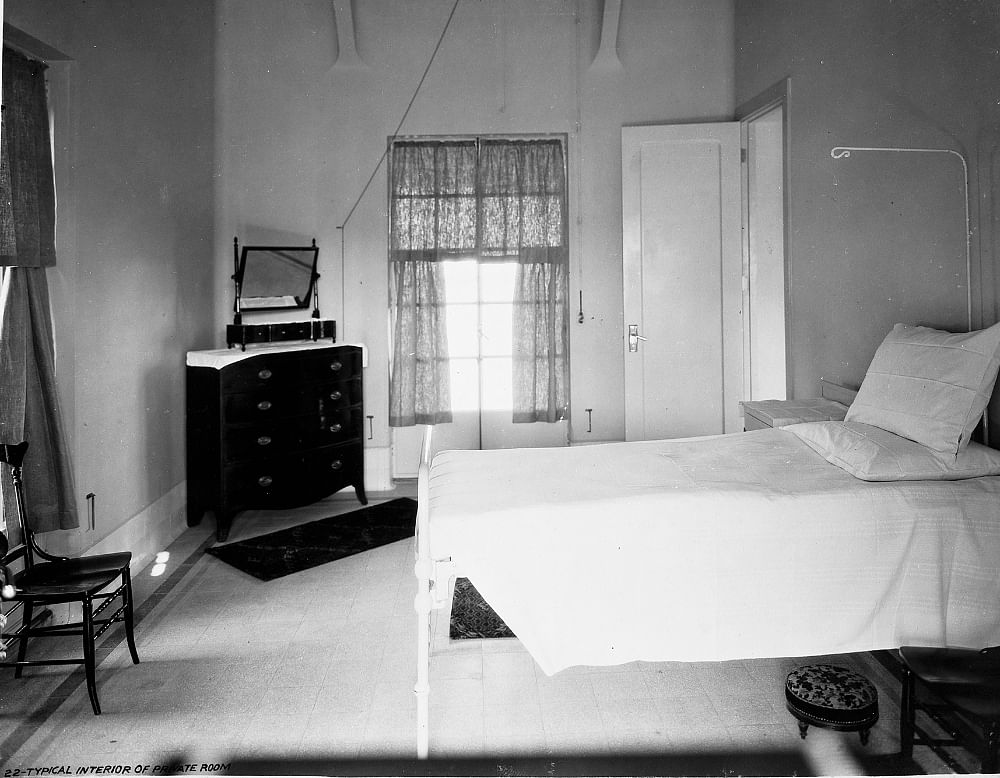
A room within the American British Cowdray Hospital, where Frida Kahlo checked in for her multiple surgeries. The exhibition emphasizes her extended periods of confinement there.
In her self-portraits, Frida always played up her idiosyncrasies instead of hiding them. How do you think she would fit into the world today – one that celebrates imperfections and individuality as much as it does aesthetic perfection?
“Personally, I think that Frida Kahlo’s work is an autobiography that must be analysed from different aspects. Kahlo manifested herself through her art in every sense – her political ideas, love problems, family and physical condition were always present in her works. She precisely showcased her beauty despite having an imperfect body. As such, Frida Kahlo has become a great influence that can be seen even in contemporary art today where many artists use pain and self-representation as themes in their works.”
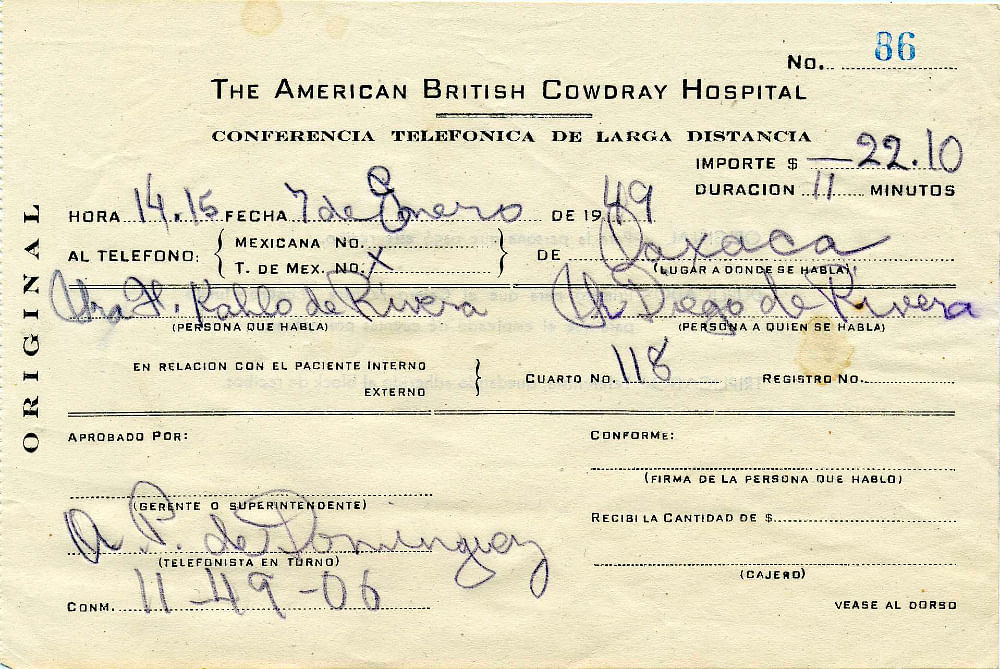
Phone call payment note from the American British Cowdray Hospital
How much of Frida’s personality and life story affected the way she dressed and put herself together?
“Firstly, Frida Kahlo and Diego Rivera were passionate collectors of folk art and pre-Hispanic art from Mexico, which included jewellery and textiles. For Kahlo, wearing traditional Mexican clothing was a manifestation of her love for the Mexican country and its traditions. However, clothing such as the Huipil was also comfortable for her when she had to wear an orthopaedic corset. This is an example of how over time, the use of traditional clothing became part of her very attractive personality.”
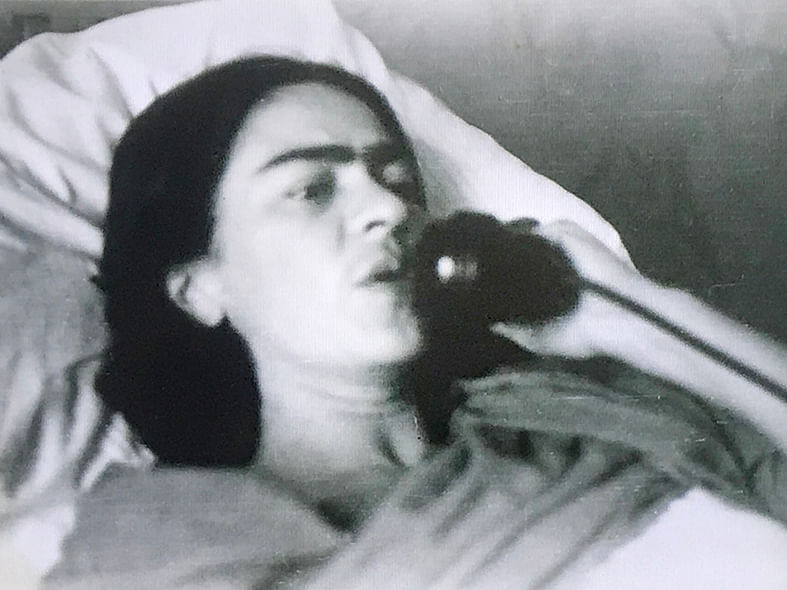
Frida Kahlo talking on the phone while in hospital
How do you think Frida’s self-expression and authenticity have made an enduring impact on the way we see beauty today?
“Frida Kahlo was already making an impact in the world of fashion through the way she dressed (she appeared in Vogue as early as 1937 and inspired Elsa Schiaparelli’s dress named La Robe Madame Rivera in 1939, for example). Recognised throughout the world, she has sparked a taste and trend for Mexican aesthetics or the life of the artist, as seen by how she has inspired famous present‐day designers such as Jean Paul Gaultier, among many others. The use of Mexican outfits, bright colours, flowers and ribbons is also common among women trying to dress to look like Kahlo. However, I believe that the main thing we should learn from Frida Kahlo is authenticity: to be authentic no matter what style one personally likes.”
This interview has been edited for clarity and brevity.
This article first appeared in the May 2024 Beauty Edition of FEMALE



